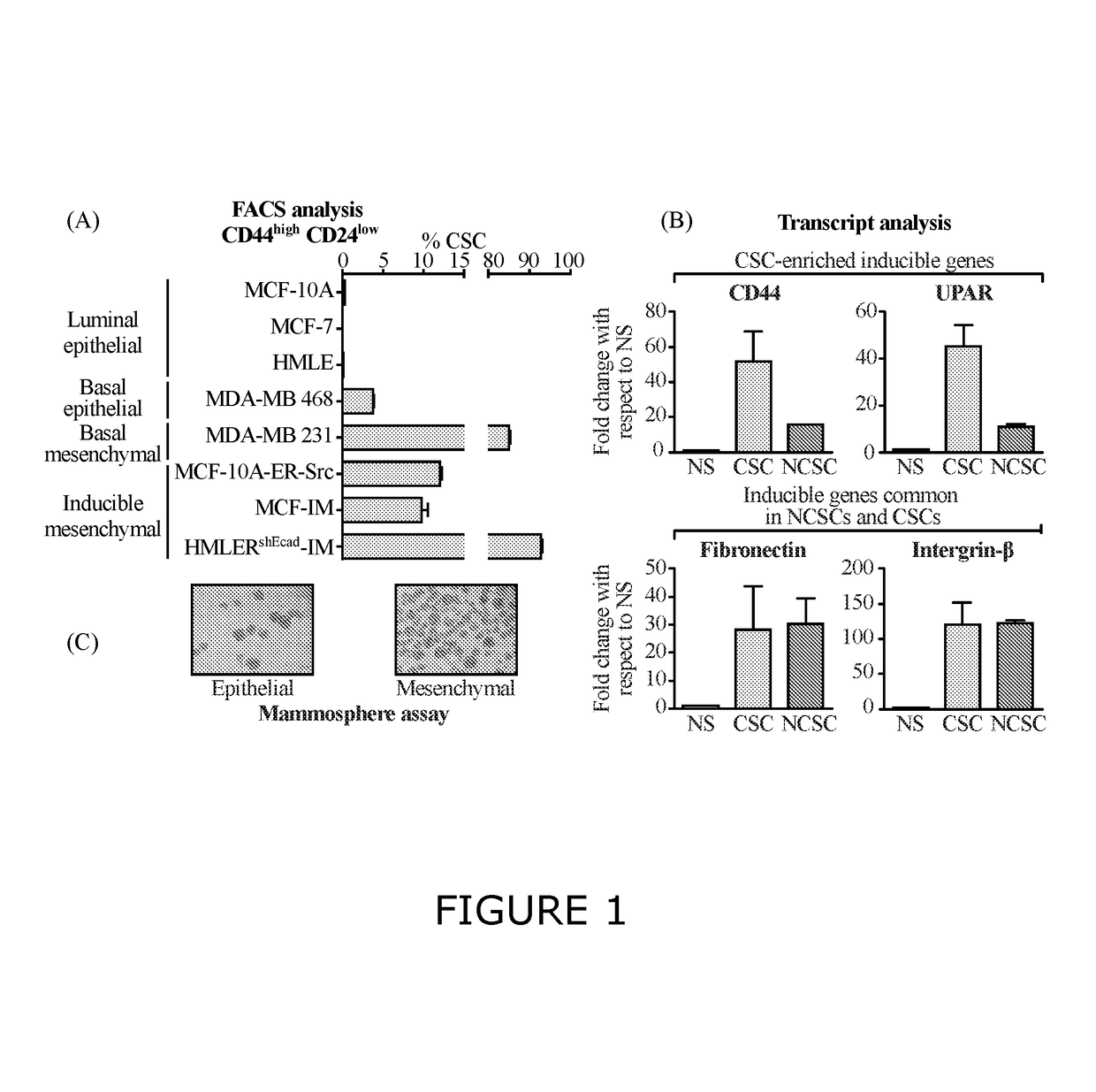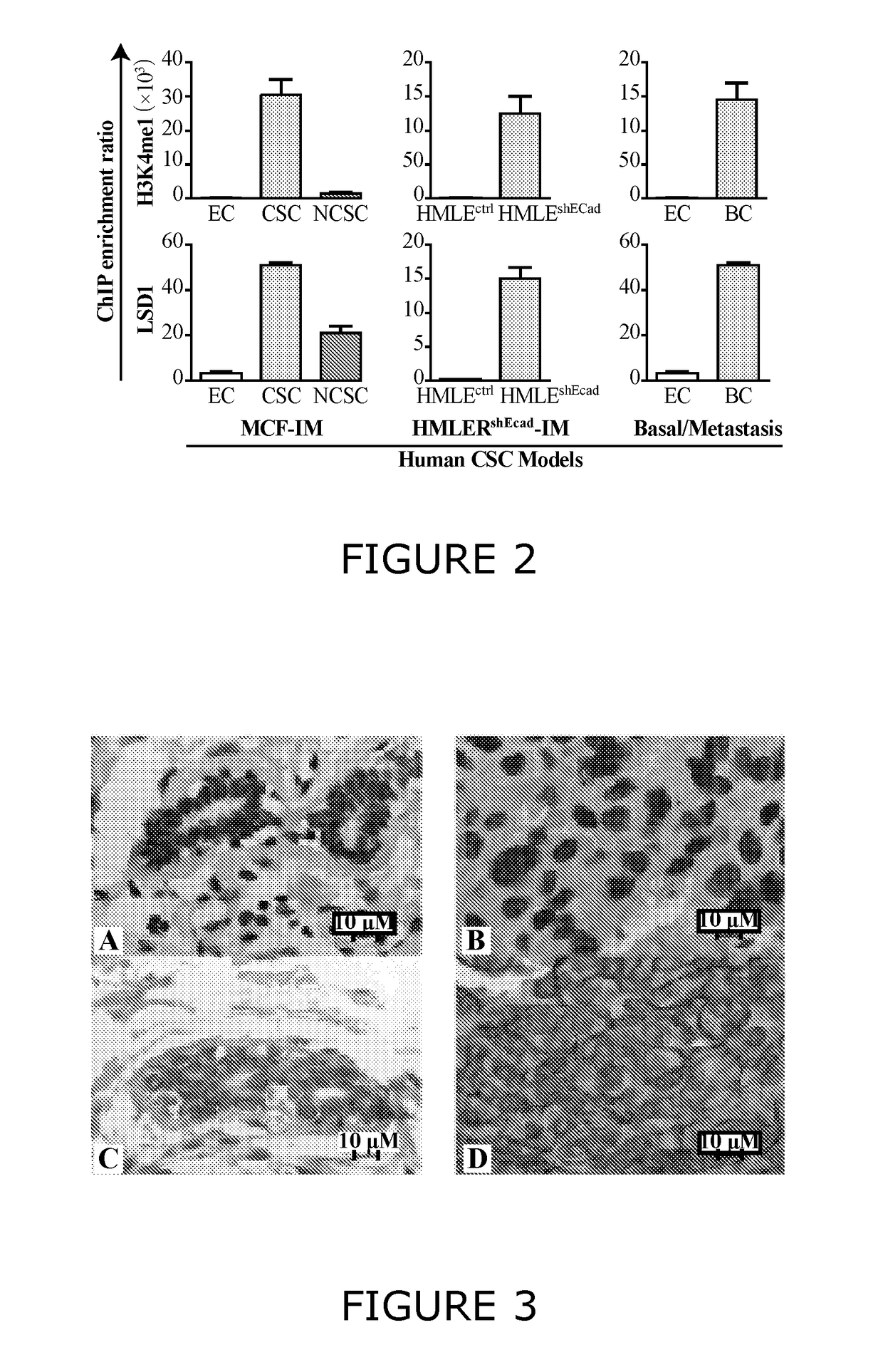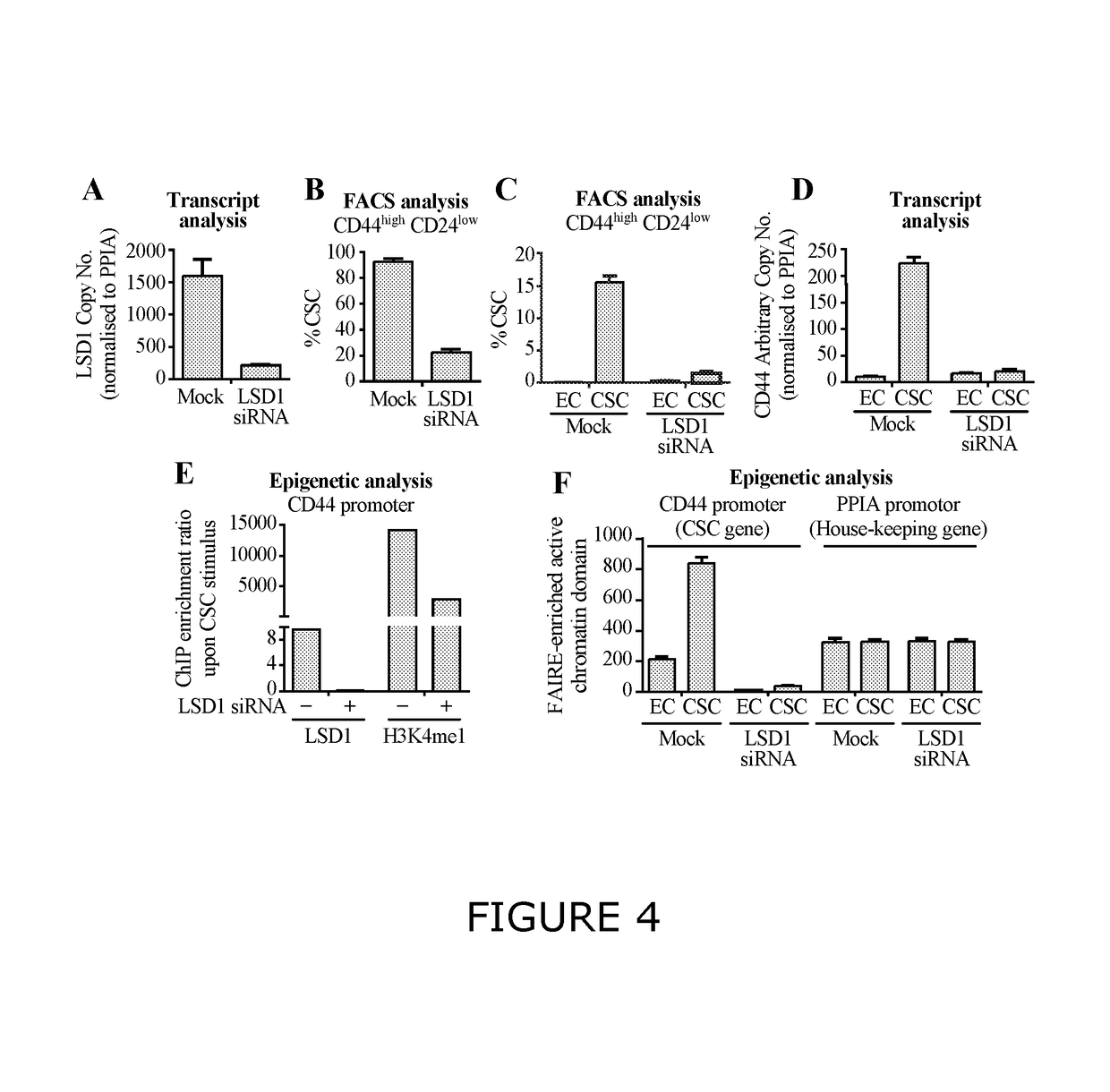Methods and compositions for modulating cancer stem cells
a cancer stem cell and composition technology, applied in the field of lysine demethylase inhibitors, can solve the problems of relapse of cancer, slow cell turnover rate, and unknown potential role of csc-specific differentiation plasticity in tumorigenicity, and achieve the effects of inhibiting emt, reducing or inhibiting the proliferation and emt of lsd-overexpressing cells
- Summary
- Abstract
- Description
- Claims
- Application Information
AI Technical Summary
Benefits of technology
Problems solved by technology
Method used
Image
Examples
example 1
CSCs and Epigenetic Regulation
[0397]CSCs have several important in vitro properties. First, breast CSCs are characterized by the key surface markers CD44high CD24low (FIG. 1 A). Second, CSC-enriched populations have the ability to form spherical colonies in suspension cultures (termed mammospheres for breast CSCs) (FIG. 1 C). Third, CSC-enriched populations show enhanced resistance to chemotherapy and ionizing radiation. Fourth, they display a distinct transcriptome profile (FIG. 1 B). Therefore, CSCs represent a distinct population of cancer cells with distinct molecular mechanisms maintaining their unique in vitro properties.
example 2
LSD1 Functions as an Epigenetic Regulator of Human Breast CSCs
[0398]H3K4me1 and LSD1 ChIP assays were conducted across the CD44 promoter region in three human CSC models. (EC, MCF-7 epithelial cell line; BC, MDA-MB 231 basal cell line). The results presented in FIG. 2 show that LSD1, H3K4me1 and H3K9me1 histone modification are enriched across key genes whose transcripts are predominantly enriched in breast CSCs (e.g., CD44, UPAR, laminin).
example 3
Nuclear Staining of LSD1 in Human Normal and Breast Cancer Tissue
[0399]Nuclear staining of normal and human breast cancer tissue was carried out using an anti-LSD1 antibody. The results presented in FIG. 3 reveal: that normal breast tissue shows strong nuclear immunoreactivity for LSD1 (Abcam; 1 / 50 dilution) in normal ductal epithelium and adjacent stromal cells (see Panel A in FIG. 3); and that Grade 3 invasive ductal carcinoma (ER / PR−Her2+) shows strong nuclear immunoreactivity for LSD1 (see Panel B in FIG. 3). Inspection of a photomicrograph of normal breast tissue (see Panel C in FIG. 3) shows patchy weak membranous staining for CD44 (BD Pharmingen; 1 / 50 dilution) in normal ductal epithelium. By contrast, the same grade 3 invasive ductal carcinoma shows strong circumferential membranous staining with an antibody targeted against CD44 (see Panel D in FIG. 3).
PUM
| Property | Measurement | Unit |
|---|---|---|
| volume | aaaaa | aaaaa |
| time | aaaaa | aaaaa |
| molecular weight | aaaaa | aaaaa |
Abstract
Description
Claims
Application Information
 Login to View More
Login to View More - R&D
- Intellectual Property
- Life Sciences
- Materials
- Tech Scout
- Unparalleled Data Quality
- Higher Quality Content
- 60% Fewer Hallucinations
Browse by: Latest US Patents, China's latest patents, Technical Efficacy Thesaurus, Application Domain, Technology Topic, Popular Technical Reports.
© 2025 PatSnap. All rights reserved.Legal|Privacy policy|Modern Slavery Act Transparency Statement|Sitemap|About US| Contact US: help@patsnap.com



